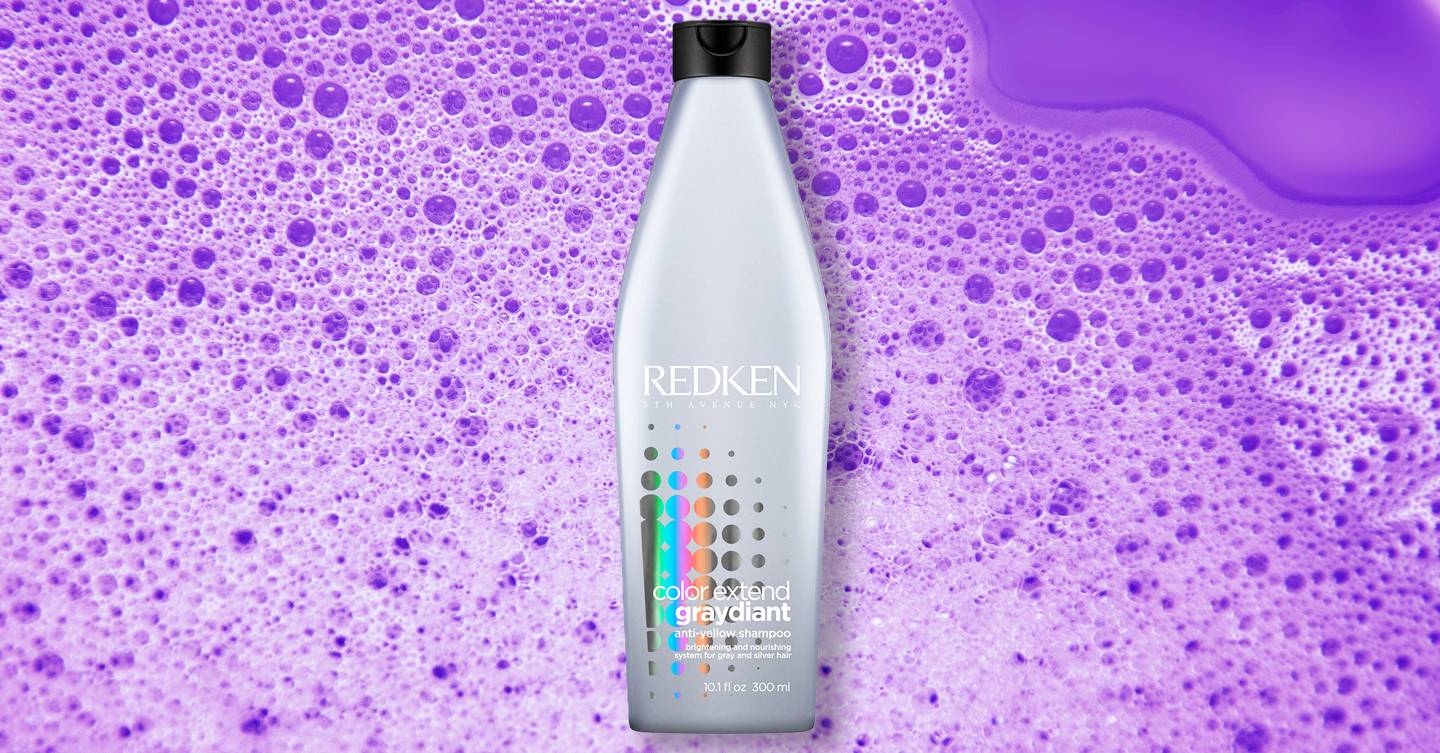Whether you’re fully silver or have shots of sparkle speckled through your hair, greys are beautiful, natural and increasingly popular.
Over lockdown, we’ve all become a lot more familiar with our natural colour. And we’re more than happy to rock it. If that sounds like you, you’re in famous company. At last years Golden Globes, Gwyneth Paltrow gave her root regrowth a red carpet moment, and let her greys shine. She previously told People “Of course I have wrinkles and grey hair. I genuinely love it, it’s who I am.” And over the past year, Salma Hayek, Lily Allen and a whole heap of celebs have joined the party, along with loads of us at home.
The conversation around greys has shifted in recent years. Rather than covering them up, we’ve become a lot more comfortable and celebratory about our God-given strands. Instead of erasing them, we’re embracing ’em. So, we need products that will show them off to their full potential with some toning, softening and shine action. The first step, is finding your holy grail shampoo.
Before you start curating your haircare routine, though, it’s important to work out what makes grey hair tick. It’s different from other hair colours and textures and therefore requires its own unique approach. Technically speaking, grey hair isn’t grey. It doesn’t have any pigment at all. Instead, it reflects light, which is what gives it its distinctive colour.
Grey hair can also feel more coarse and limp, making it difficult to find products that soften and moisturise strands without weighing them down. Like all hair colours, it can present its own challenges, appearing dull, brittle or brassy, so shine-inducing and toning formulas are the way forward.
Before you pick up the first bottle of purple shampoo you can find, however, it’s worth noting that blonde hair is structured differently from greys. “Both colour-treated blondes and natural greys can suffer from unwanted brassiness. For blondes this is because when you lighten hair, and take out dark melanin, what is left is an orangey, golden tone,” explains Jill Lynch, John Frieda Senior R&D Manager. “Conversely, the reason grey or white hair can look brassy is because hair is naturally made up of keratin, which is warm in colour, and there is no longer pigment in these strands to mask the natural warmth of the keratin.”
“Another difference is that whilst blondes can suffer from high levels of damage, naturally grey hair is generally undamaged,” says Jill. “Non-damaged hair is harder to penetrate, which means the violet-toning molecules in a product designed specifically for grey hair need to be able to penetrate really well, without staining, whereas for blondes with damage the molecules are easily absorbed as the cuticle is already lifted. If you simply used a violet-toning shampoo developed for blondes on naturally grey or white hair, then you would find you wouldn’t get as good or as even a result.” So, it’s worth finding formulas designed specifically with your hair in mind.

